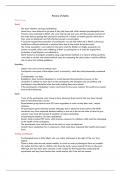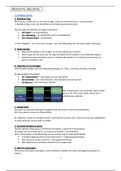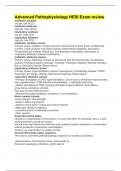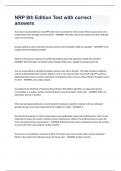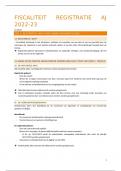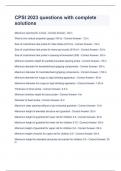Review of studies
Ethical issues
Sherif
- The boys’ identity was kept confidential
- Some boys were allowed to go home if they felt home sick which reduced psychological harm
- Parents were contacted in Sherif who were interviewed and were told the purpose and aim of
the study before gaining their permission and that of a doctor on health grounds which shows
they were not deceived, and full informed consent was provided.
- It could be argued that protection of participants was not fully followed in Sherif as the boys
could have suffered emotional or physical harm due to the events during the study.
- The ‘camp counsellors’ were asked to intervene when the Rattlers or Eagles proposals ran
counter to health, safety and wellbeing of them as participants so it could be argued that
protection of participants was adhered to.
- Sherif aimed to investigate prejudice using experimental methods in a natural setting and they
were able to do this with minimal ethical issues but repeating the study today would be difficult
due to more strict ethical guidelines.
Baddeley
- Adults were used so fewer ethical issues
- Participants were part of the subject ‘pool’ at university, which they had presumably consented
to.
- Confidentiality was kept.
- Baddeley’s study involved deception to avoid demand characteristics, however, as the
procedure is unlikely to cause harm to the participants, this deception can be justified, and
participants were debriefed after the study making them more ethical.
- If the participants in Baddeley’s study were found to have poor memory this could have caused
them to feel distressed.
Raine
- If any of the participants were found to have abnormal brain activity this may have caused
them to feel distressed/worried
- Experimental group had to have PET scans regardless in order to help their case/ reduce
sentence.
- All participants gave informed consent although, due to abnormal brain activity the NGRI
murderers may have impaired decision making so are not in the correct state of mind to give
consent/ may have felt coerced if condition to reduce sentencing.
- All participants identity was kept confidential
- Raine’s study involved PET scans, which involves exposure to radiation which could be damaging
to the health of the participants.
- The participants were told the aim of the study so were not deceived.
- Couldn’t have medication for 2 weeks prior which could have impacted their health and caused
harm
Watson and Rayner
- Psychological harm to little Albert who was visibly distressed at the sight of the rat/ furry
objects
- Chose a baby that showed mental stability to avoid as much psychological harm as possible
- His mother had the right to withdraw him from the study/ gave consent for him to take part.
Although, she may have been coerced as she worked for the hospital that conducted the
experiment and may have feared she would lose her job if she did not consent.
, - Watson and Rayner knew at least one month prior to Little Albert not being available for the
research many longer but still chose not to try and extinguish his conditioned fears which raises
ethical questions of the researchers.
- Imposing unexpected noises to try and create fear in a child could have harmed Little Albert
psychologically and he may have gone on to be fearful in the long term which violates
protection of participants.
- Watson and Rayner was conducted with few controls and in a haphazard fashion with
inconsistent presentation of stimuli and unexpected outcomes such as when the dog barked
three times and scared not only Little Albert but the adults too.
Rosenhan
- Aim can be seen as ethical as it focused on identifying and correcting the harm that diagnosis
may cause and harm that patients may face in a mental institution.
- In Rosenhan’s study the pseudo patients deliberately deceived hospital staff claiming they
heard voices, breaking ethical guidelines and wasting staff time. No staff gave their informed
consent to take part in the study and did not know they were being observed. They may have
felt distressed or angry that they were being used in a study without permission.
- Although the staff were deceived, Rosenhan did receive permission from the owners of these
hospitals, making the study more ethical.
- The pseudo-patients may have felt distressed as they reported that they were ignored and
abused by hospital staff and were not allowed to leave the hospital unless discharged, this
may have caused them psychological harm.
- The pseudo-patients all gave fully informed consent
- 2nd experiment the hospitals asked to be sent patients to test the validity of diagnosis
suggesting that this experiment was presumably more ethical as hospitals consented.
Practical issues
Sherif
- Study took place in a field/ natural setting so had high ecological validity
- The study may lack internal validity due to it being a field study, certain participant/
situational variables would not have been controlled. This also makes the study hard to
replicate so less reliable.
- Sample used matched pair design when selecting and splitting the boys into two groups to
ensure no pre-existing differences between the two groups is what caused the hostility.
- Sample was 22 11-year-old boys who were all white and middle class so may not
generalisable.
- Covert/ participant observation to maximise accuracy of observation and reduce demand
characteristics.
- However, observations often gain subjective findings. Therefore, the findings from Sheriff’s
findings may be subjective to the researchers pre-existing beliefs on prejudice and therefore,
may be unreliable.
Baddeley
- Controlled variable between the two groups (number of words, time shown for, interference
task) so had high internal validity
- This also meant that the study consisted of standardised procedures so it could be easily
replicated to check for consistency. Baddeley’s third experiment was a replication of his second
experiment and he concluded similar findings making the study reliable
- The study may have lacked ecological validity because doesn’t represent how memory is used
in real life
- Used independent groups to avoid participants from guessing aim and presenting demand
characteristics – although this introduced the issue of participant variables.
, - Screened out participants who he thought did not represent the general population and used
72 men and women making the study highly generalisable.
Raine
- Matched pairs – age gender and history of sz (increases internal validity as it decreases
participant variables)
- The study also involved other controls such as all participants doing the same interference task
for the same amount of time. This increases the internal validity to ensure the cause of brain
aggression was because of brain damage.
- However, the study was correlational as brain damage cannot be practically or ethically
isolated as a factor, other variables such as hormone levels, genetics were not controlled
meaning study cannot establish cause and effect.
- Lacks mundane realism because the task may not represent brain activity during murder
- Brain abnormalities in murderers not generalisable because NGRI murderers are clinically
insane so don’t represent all murderers.
- The researchers used PET scans to compare the brain activities of the controls and the NGRI
murderers. This allowed objective and reliable comparisons to be made.
Watson and Rayner
- Watson and Raynor only used one participant who was a baby, therefore the researchers may
have been unaware of any undiagnosed disorder that little Albert may have had which caused
a fear response to easily be CC in him. Therefore, this may not be generalisable to the whole
population.
- However, Albert was selected due to his emotional stability and therefore, could make the
results more generalisable.
- Controls put in place such as base line test to ensure Albert had a normal mental state/ anxiety
levels. This increased the internal validity and ensured fear was due to CC
- The study may lack ecological validity as it took place in an artificial environment rather than a
natural one such as a playroom. This means that Little Albert may have reacted differently to
how he would have in a real-life environment.
- The study was an observation and therefore the results may be subjective as the researchers
may have assumed Albert looked distressed even if he didn’t as this would fit in with their
preexisting bias.
Rosenhan
- Ethnocentric – only took place in the US where they share the same westernised view on
symptoms such as hallucinations and use the DSM – may not represent issues with mental health
diagnosis in other cultures.
- High ecological validity – took place in 12 real life hospitals across 5 US states with real
hospital staff to ensure findings represent the issues with diagnostic systems and mental health
institution in real life.
- High internal validity – hospital staff were unaware they were being observed so reduce
demand characteristics
- Study involved standardised procedures so it could easily be replicated, Rosenhan repeated
the study and found 41/193 of the patients were misdiagnosed meaning the issues found with
the diagnostic system is reliable.
- Qualitative (e.g. writing notes about the staff was notes as writing behaviour and was seen as
abnormal) and quantitative (e.g. ignored by 71% doctors and 88% nurses) data
Reductionism
Sherif
Ethical issues
Sherif
- The boys’ identity was kept confidential
- Some boys were allowed to go home if they felt home sick which reduced psychological harm
- Parents were contacted in Sherif who were interviewed and were told the purpose and aim of
the study before gaining their permission and that of a doctor on health grounds which shows
they were not deceived, and full informed consent was provided.
- It could be argued that protection of participants was not fully followed in Sherif as the boys
could have suffered emotional or physical harm due to the events during the study.
- The ‘camp counsellors’ were asked to intervene when the Rattlers or Eagles proposals ran
counter to health, safety and wellbeing of them as participants so it could be argued that
protection of participants was adhered to.
- Sherif aimed to investigate prejudice using experimental methods in a natural setting and they
were able to do this with minimal ethical issues but repeating the study today would be difficult
due to more strict ethical guidelines.
Baddeley
- Adults were used so fewer ethical issues
- Participants were part of the subject ‘pool’ at university, which they had presumably consented
to.
- Confidentiality was kept.
- Baddeley’s study involved deception to avoid demand characteristics, however, as the
procedure is unlikely to cause harm to the participants, this deception can be justified, and
participants were debriefed after the study making them more ethical.
- If the participants in Baddeley’s study were found to have poor memory this could have caused
them to feel distressed.
Raine
- If any of the participants were found to have abnormal brain activity this may have caused
them to feel distressed/worried
- Experimental group had to have PET scans regardless in order to help their case/ reduce
sentence.
- All participants gave informed consent although, due to abnormal brain activity the NGRI
murderers may have impaired decision making so are not in the correct state of mind to give
consent/ may have felt coerced if condition to reduce sentencing.
- All participants identity was kept confidential
- Raine’s study involved PET scans, which involves exposure to radiation which could be damaging
to the health of the participants.
- The participants were told the aim of the study so were not deceived.
- Couldn’t have medication for 2 weeks prior which could have impacted their health and caused
harm
Watson and Rayner
- Psychological harm to little Albert who was visibly distressed at the sight of the rat/ furry
objects
- Chose a baby that showed mental stability to avoid as much psychological harm as possible
- His mother had the right to withdraw him from the study/ gave consent for him to take part.
Although, she may have been coerced as she worked for the hospital that conducted the
experiment and may have feared she would lose her job if she did not consent.
, - Watson and Rayner knew at least one month prior to Little Albert not being available for the
research many longer but still chose not to try and extinguish his conditioned fears which raises
ethical questions of the researchers.
- Imposing unexpected noises to try and create fear in a child could have harmed Little Albert
psychologically and he may have gone on to be fearful in the long term which violates
protection of participants.
- Watson and Rayner was conducted with few controls and in a haphazard fashion with
inconsistent presentation of stimuli and unexpected outcomes such as when the dog barked
three times and scared not only Little Albert but the adults too.
Rosenhan
- Aim can be seen as ethical as it focused on identifying and correcting the harm that diagnosis
may cause and harm that patients may face in a mental institution.
- In Rosenhan’s study the pseudo patients deliberately deceived hospital staff claiming they
heard voices, breaking ethical guidelines and wasting staff time. No staff gave their informed
consent to take part in the study and did not know they were being observed. They may have
felt distressed or angry that they were being used in a study without permission.
- Although the staff were deceived, Rosenhan did receive permission from the owners of these
hospitals, making the study more ethical.
- The pseudo-patients may have felt distressed as they reported that they were ignored and
abused by hospital staff and were not allowed to leave the hospital unless discharged, this
may have caused them psychological harm.
- The pseudo-patients all gave fully informed consent
- 2nd experiment the hospitals asked to be sent patients to test the validity of diagnosis
suggesting that this experiment was presumably more ethical as hospitals consented.
Practical issues
Sherif
- Study took place in a field/ natural setting so had high ecological validity
- The study may lack internal validity due to it being a field study, certain participant/
situational variables would not have been controlled. This also makes the study hard to
replicate so less reliable.
- Sample used matched pair design when selecting and splitting the boys into two groups to
ensure no pre-existing differences between the two groups is what caused the hostility.
- Sample was 22 11-year-old boys who were all white and middle class so may not
generalisable.
- Covert/ participant observation to maximise accuracy of observation and reduce demand
characteristics.
- However, observations often gain subjective findings. Therefore, the findings from Sheriff’s
findings may be subjective to the researchers pre-existing beliefs on prejudice and therefore,
may be unreliable.
Baddeley
- Controlled variable between the two groups (number of words, time shown for, interference
task) so had high internal validity
- This also meant that the study consisted of standardised procedures so it could be easily
replicated to check for consistency. Baddeley’s third experiment was a replication of his second
experiment and he concluded similar findings making the study reliable
- The study may have lacked ecological validity because doesn’t represent how memory is used
in real life
- Used independent groups to avoid participants from guessing aim and presenting demand
characteristics – although this introduced the issue of participant variables.
, - Screened out participants who he thought did not represent the general population and used
72 men and women making the study highly generalisable.
Raine
- Matched pairs – age gender and history of sz (increases internal validity as it decreases
participant variables)
- The study also involved other controls such as all participants doing the same interference task
for the same amount of time. This increases the internal validity to ensure the cause of brain
aggression was because of brain damage.
- However, the study was correlational as brain damage cannot be practically or ethically
isolated as a factor, other variables such as hormone levels, genetics were not controlled
meaning study cannot establish cause and effect.
- Lacks mundane realism because the task may not represent brain activity during murder
- Brain abnormalities in murderers not generalisable because NGRI murderers are clinically
insane so don’t represent all murderers.
- The researchers used PET scans to compare the brain activities of the controls and the NGRI
murderers. This allowed objective and reliable comparisons to be made.
Watson and Rayner
- Watson and Raynor only used one participant who was a baby, therefore the researchers may
have been unaware of any undiagnosed disorder that little Albert may have had which caused
a fear response to easily be CC in him. Therefore, this may not be generalisable to the whole
population.
- However, Albert was selected due to his emotional stability and therefore, could make the
results more generalisable.
- Controls put in place such as base line test to ensure Albert had a normal mental state/ anxiety
levels. This increased the internal validity and ensured fear was due to CC
- The study may lack ecological validity as it took place in an artificial environment rather than a
natural one such as a playroom. This means that Little Albert may have reacted differently to
how he would have in a real-life environment.
- The study was an observation and therefore the results may be subjective as the researchers
may have assumed Albert looked distressed even if he didn’t as this would fit in with their
preexisting bias.
Rosenhan
- Ethnocentric – only took place in the US where they share the same westernised view on
symptoms such as hallucinations and use the DSM – may not represent issues with mental health
diagnosis in other cultures.
- High ecological validity – took place in 12 real life hospitals across 5 US states with real
hospital staff to ensure findings represent the issues with diagnostic systems and mental health
institution in real life.
- High internal validity – hospital staff were unaware they were being observed so reduce
demand characteristics
- Study involved standardised procedures so it could easily be replicated, Rosenhan repeated
the study and found 41/193 of the patients were misdiagnosed meaning the issues found with
the diagnostic system is reliable.
- Qualitative (e.g. writing notes about the staff was notes as writing behaviour and was seen as
abnormal) and quantitative (e.g. ignored by 71% doctors and 88% nurses) data
Reductionism
Sherif

